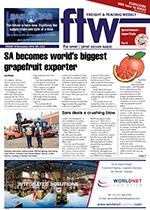South Africa’s import bill for 2017 amounted to around R21 000 per person – or around R116 billion. This represented a -19.5% decline in value over the fiveyear period starting in 2013, but an 11.3% gain from 2016 to 2017, according to WTEx. Around 45% of South Africa’s imports by value in 2017 were purchased from Asian countries. China –SA’s biggest trading partner at R116bn in exports – enjoyed twice the Asian market share of Japan (R56bn), followed by South Korea on R26bn. European trade partners supplied 33% of imports, with the next-largest being 10% originating from the rest of Africa. Germany, which is also South Africa’s biggest export destination in Europe, dominates European exports to South Africa at R128bn worth of goods – nearly four times that of the next-biggest, the United Kingdom (R33bn), followed by Italy (R30bn). Goods purchased from North America accounted for 7.6% of South Africa’s imports, with just 3% coming from Latin America (excluding Mexico) plus the Caribbean. As is to be expected, the biggest import category by far is crude oil, refined fuels and electricity – around 15% of imports by value in 2017. This is reflected in the September 2018 stats where South Africa spent nearly as much on imports of energy as it did on all the other top 10 imports combined. According to the South African Revenue Service (Sars) the country spent over R17 billion on imports of fuel and other energy, and under R21bn on the rest. South Africa’s imports from Africa are skewed by oil imports. In the first nine months of the year South Africa’s two top suppliers in Africa were Nigeria (R36bn) and Angola (R11bn). The next three major African exporters to South Africa are Swaziland (R11bn), Namibia (R9bn) and Mozambique (R9bn). South Africa has imported R4bn worth of chemicals from Swaziland, followed by R3bn in prepared foodstuffs and R2bn worth of textiles. In total, different categories of vehicles, components and accessories accounted for nearly R6bn worth of imports in September, followed by R3bn on telephone sets – with cell phones accounting for around R1.4bn of that segment. These numbers follow the trend, with machinery, including computers, making up 13% of imports in 2017
INSERT


